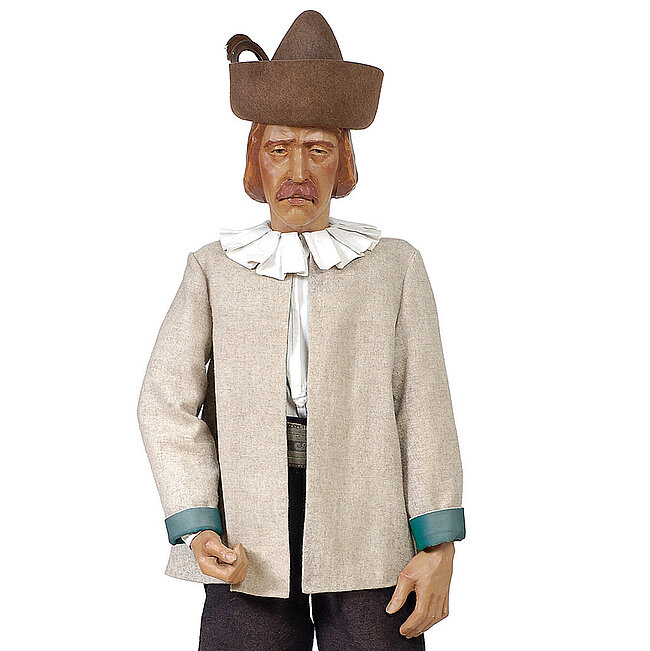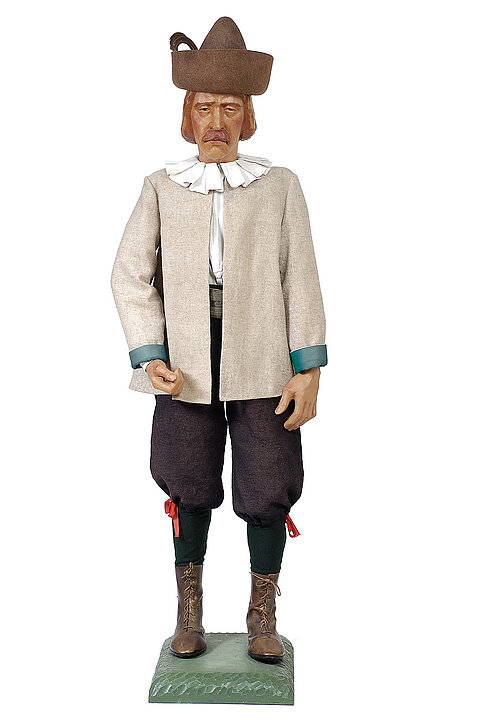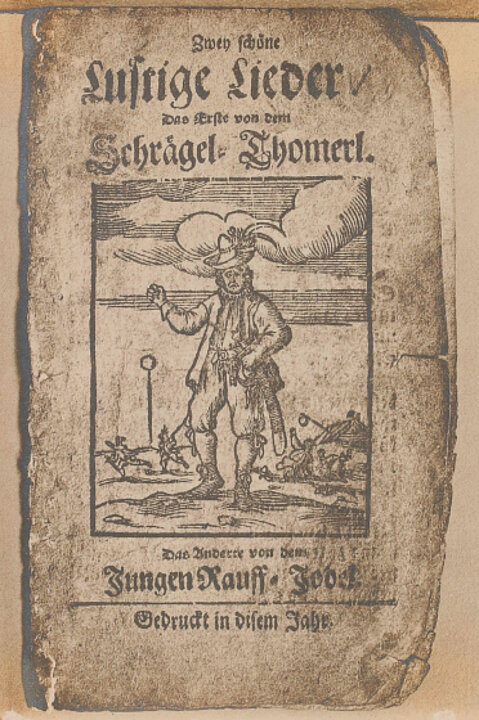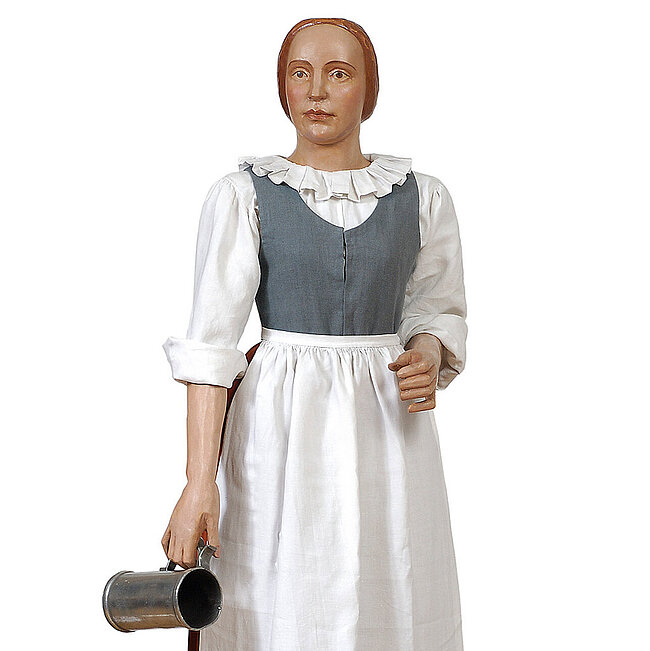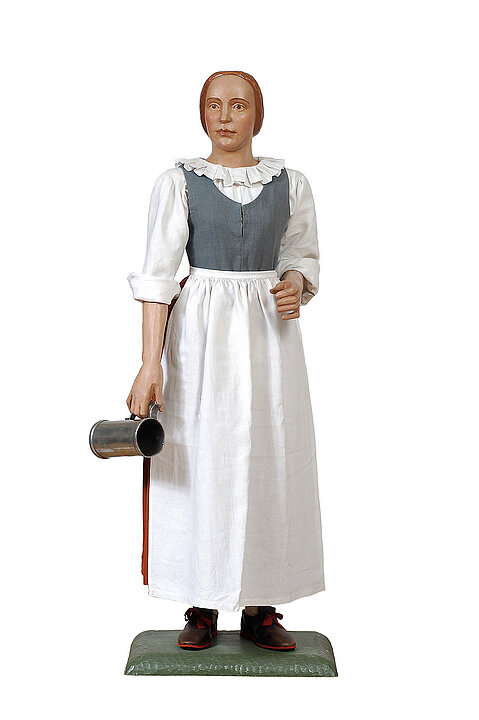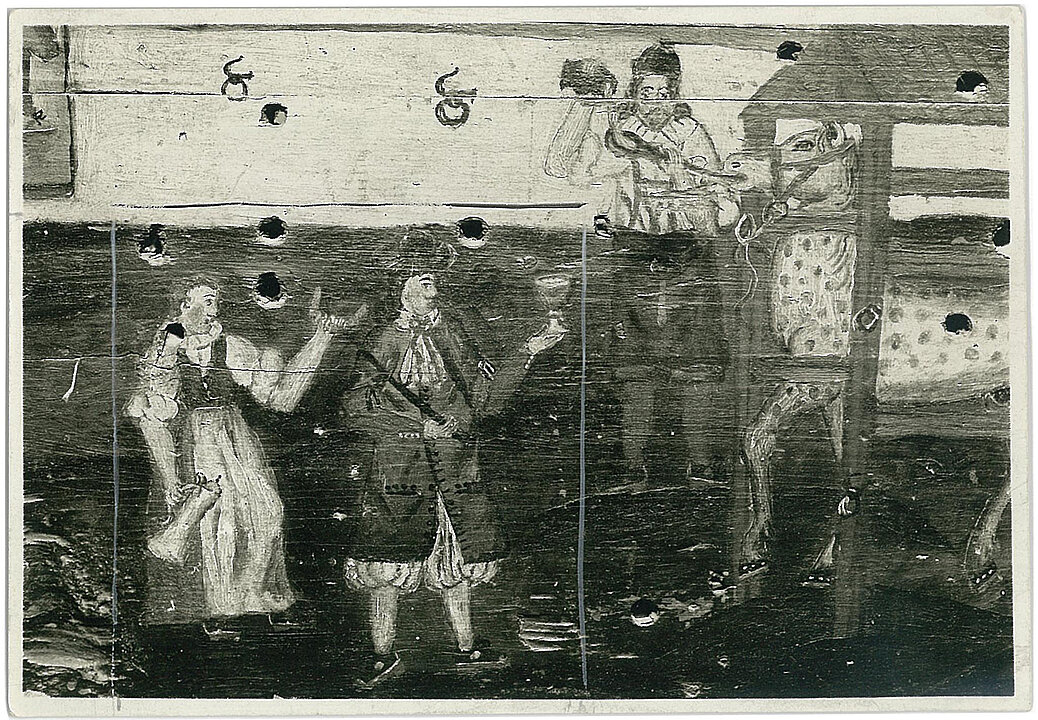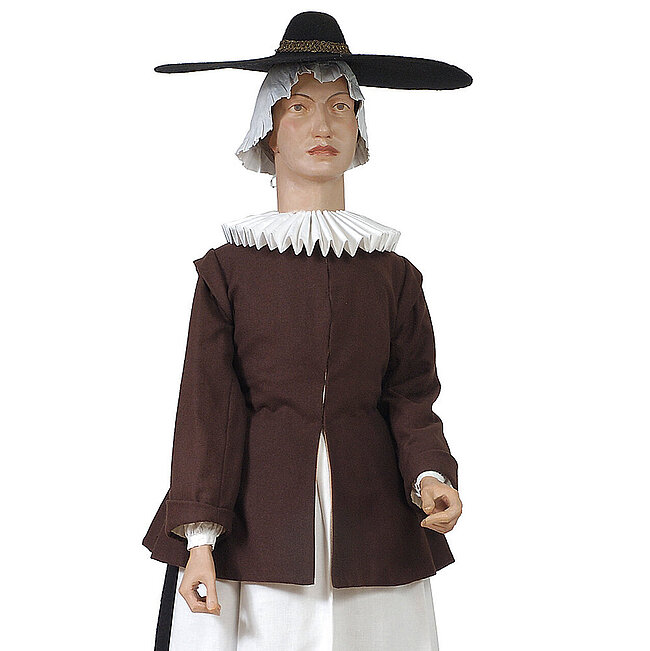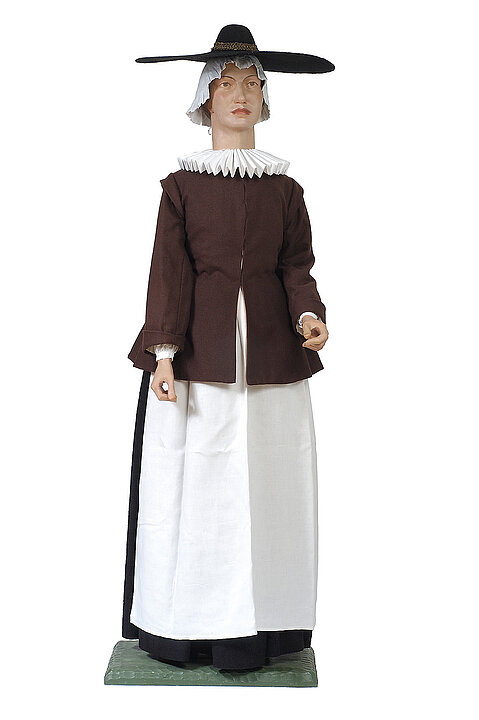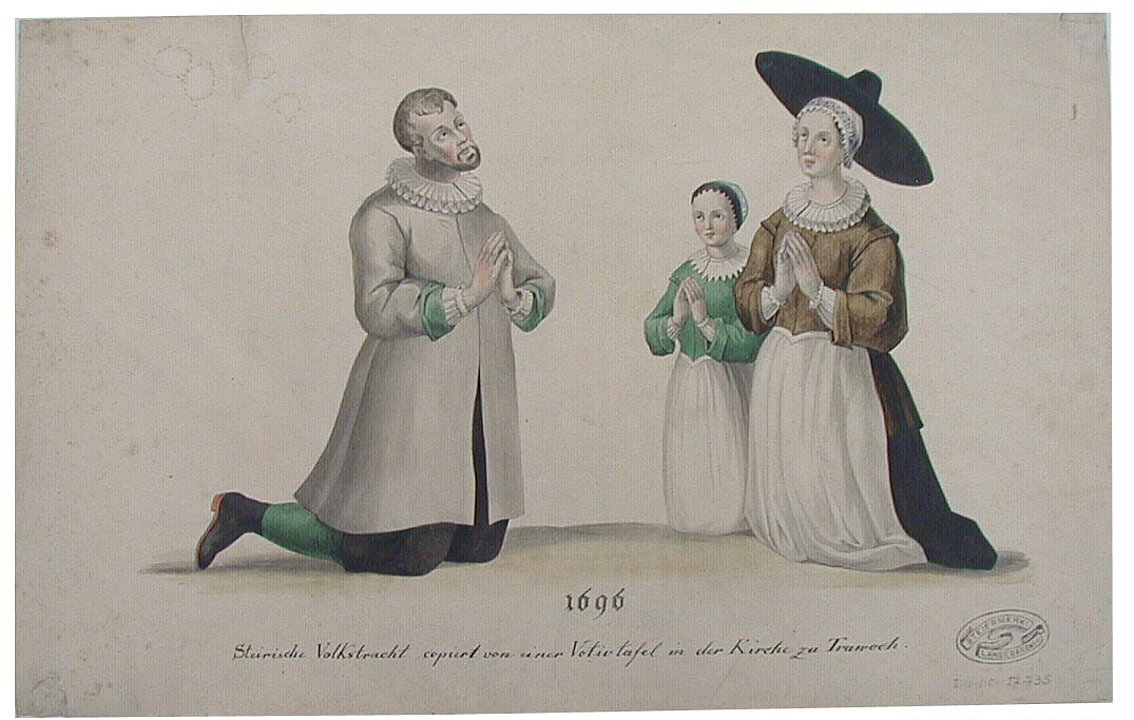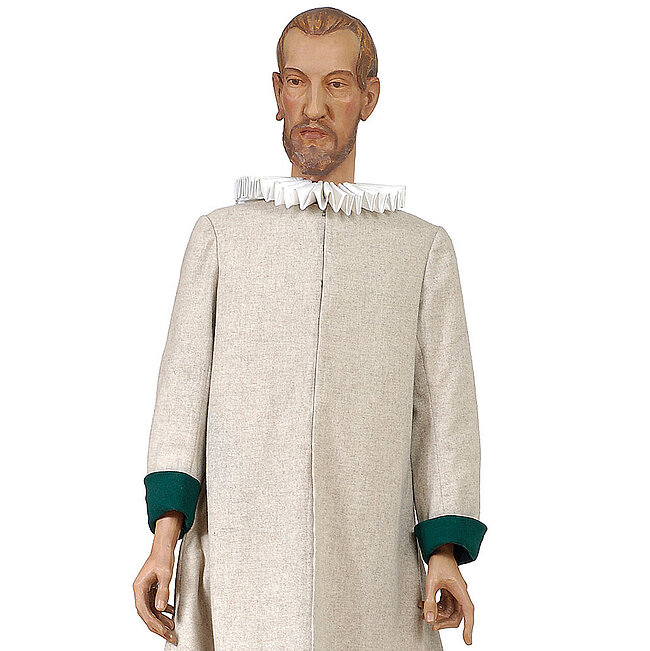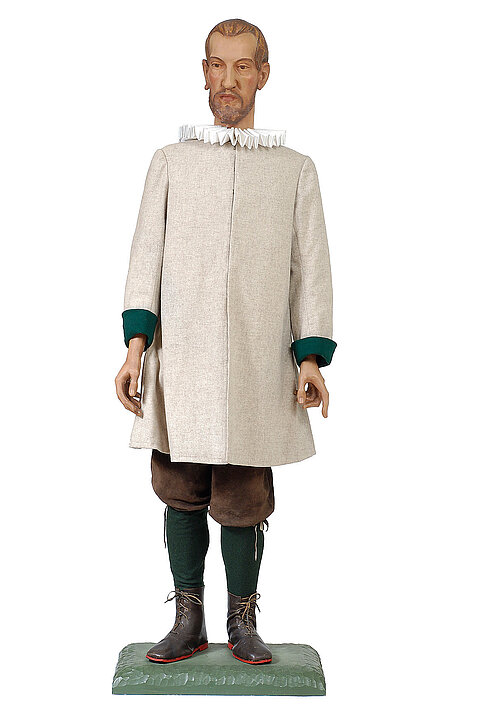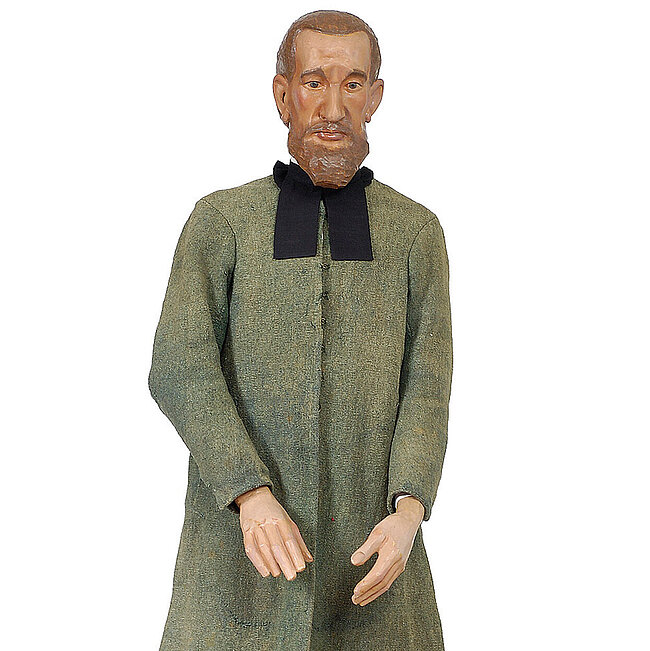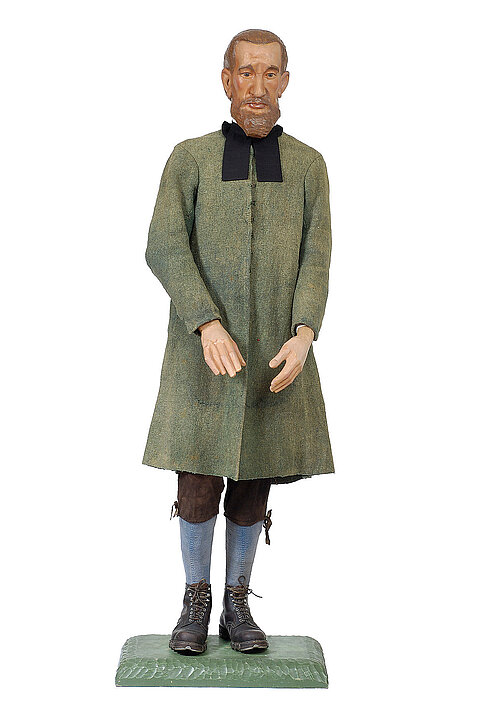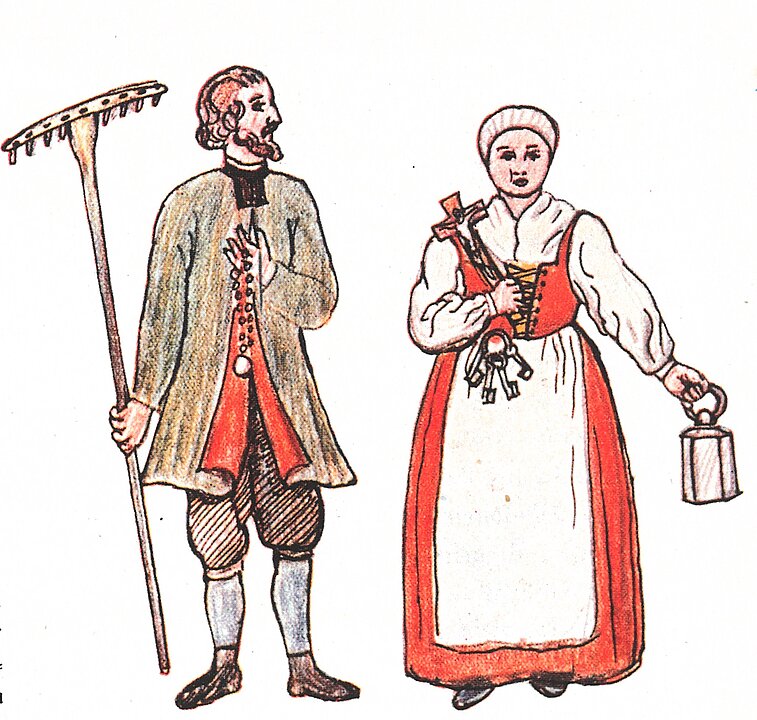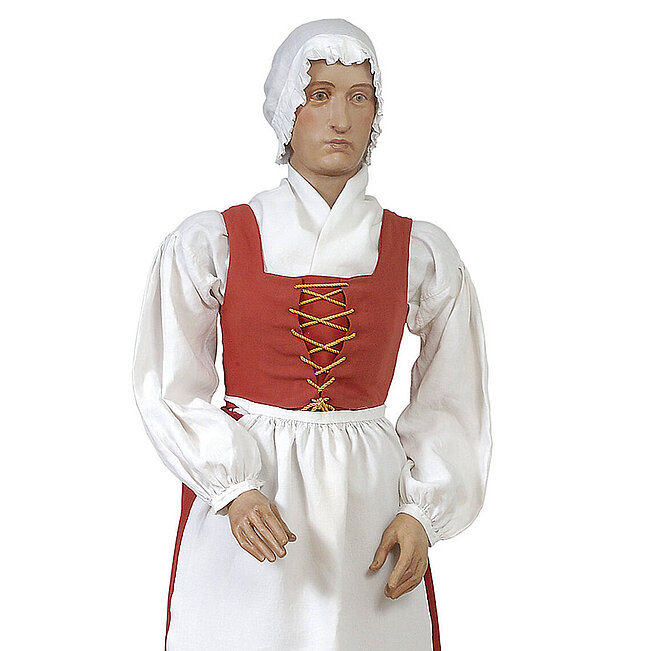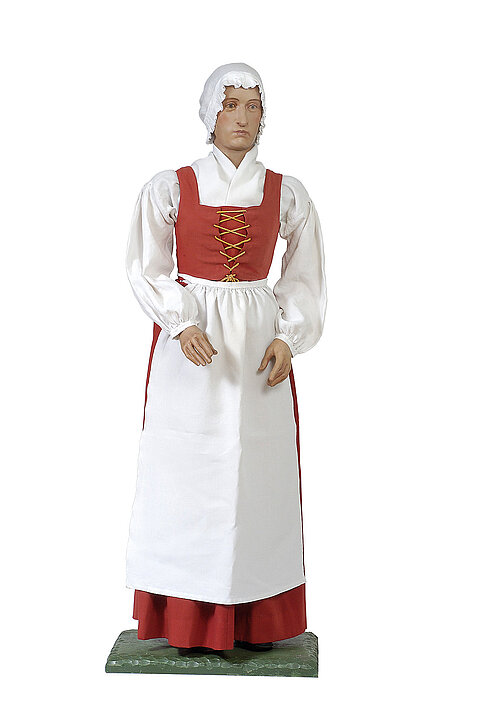Of interest to folk studies
The figure was assembled or reconstructed from the illustration on a songsheet from the late 17th century. The Graz merchant Adolph Kroath had acquired the sheet at a ‘rag market’; it was passed on to Konrad Mautner, who as a folk song researcher was interested in the text. Mautner noted that the term Jodl was often used as a collective name for the rural population. Jodl is also translated in the literature as ‘noisy man’, ‘fool’, or ‘rude lout’. However, Konrad Mautner doubted that the ‘lad of thirty years’ was at home in the ‘noble Steyermark’, as the song text proclaims. Similar characters, according to later proponents of folk studies, were more often found in Bavaria, Tyrol, Salzburg or Upper Austria than in Styria. The Eisenerzer Bergreihen of 1655 tell of ‘Fäusthelden’ (‘fist heroes’) or ‘Räiffer’ (‘brawlers’) in Upper Styria and Upper Austria. These characters sometimes travelled for miles to duel with their peers at dances or weddings. In general, village events such as church fairs were frequently accompanied by brawls.
Feathers as a sign
For Geramb, the shape of the hat was a precursor of various later peasant men's hats and was considered a barometer of mood: depending on how the hat was put on or how the feather decoration was stuck in, this indicated whether the person was up for a brawl. Thus, it is further said in the Bergreihen: whoever ‘(...) wore a crane feather on their hats, then he must address two of his opponents, and let them have it, as they say’. Crane feathers were described only by the author of this text, Matthias Abele von und zu Lilienberg. Konrad Mautner mentioned grouse feathers. For the hat of the figure in the Trachtensaal, Viktor Germab used the feathers of a domestic chicken.



















